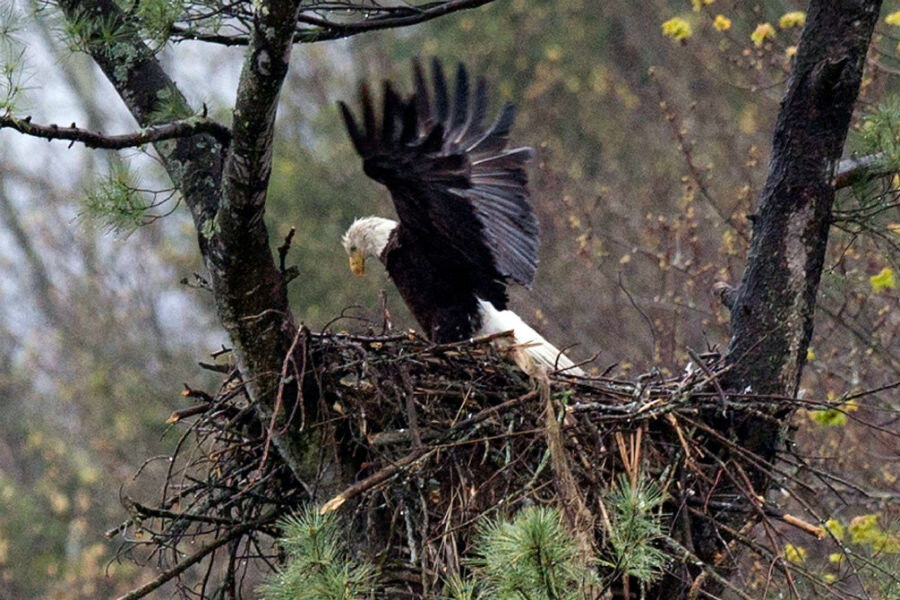Does the bald eagle's comeback spell bad news for other species?
Loading...
Bald eagles have come a long way over the past few decades.
During the 20th century, the US national bird's population dropped dangerously low because of hunting, loss of habitat, and the proliferation of toxic pesticides such as DDT. But various conservation efforts and protections from the Endangered Species Act have helped the national bird rebound from the brink of extinction.
But now that the bald eagle is back, some have questioned whether its success could be harmful to other species. In the time since the national bird has rebounded, there have been multiple shifts in its ecosystem, causing it to seek prey in the form of livestock and even endangered species. And while the bald eagle itself is no longer endangered, it still carries legal protections that can make it difficult for conservationists and farmers to deal with the threat of the resurgent apex predator.
In 1963, there were only 487 nesting pairs of bald eagles in the Lower 48, according to the Fish and Wildlife Service. The remaining birds were listed as endangered in most US states under the Endangered Species Act in 1973, with DDT, one of the main causes of the birds' decline, having been banned the year prior. This protected status, along with dedicated programs for breeding the birds in captivity and reintroducing them into the wild, enabled the species to recover to 9,789 nesting pair in 2007.
"Today I am proud to announce: the eagle has returned," then-Secretary of the Interior Dirk Kempthorne announced that year. "Based on its dramatic recovery, it is my honor to announce the Department of the Interiors decision to remove the American Bald Eagle from the Endangered Species List."
In the decade since the bald eagle was removed from the Endangered Species list, its numbers have continued to grow. But that's not necessarily such great news for animals farther down the food chain.
"Eagles are very opportunistic predators," Chris DeSorbo, director of the raptor program at the Biodiversity Research Institute in Portland, Maine, told the Associated Press. "They are going to try to take advantage of an easy meal wherever they can."
Since the bald eagle has been away, overfishing has significantly impacted the availability of eagles' preferred food – cod and salmon – in coastal regions. To survive, bald eagles will eat whatever is available, including endangered species.
One particularly effected species is the great cormorant, which has made a similar comeback in recent decades, but eagles have been hindering that progress. In the 1990s, there were 240 nesting pairs of the great cormorant in the state, but that number had dropped to 40 in 2016, according to NPR. That drop has been at least partially attributed to eagle attacks.
For conservationists, the next step after the restoration of the national bird should be a reconsideration of the approach towards eagle management in order to restore some sort of ecological balance, Bryan Watts, director of the center for conservation biology at the College of William and Mary, told NPR in August 2016.
"In terms of eagles, because of their status within our society, it's a discussion that's been put off, but ultimately we're going to have to face," he said.
But it's not just endangered animals that are affected. With the bald eagle increase, farmers have also begun to see the effects of the bird's return as bald eagles attack livestock, from chickens to young lambs.
"It's a fully protected bird. If you have foxes, coyotes, raccoons, a farmer can do something about that," Ken Klippen, a poultry scientist and former farmer who heads the National Association of Egg Farmers, told the AP. "But if it's a bald eagle? His hands are tied."
Of course, some of these losses are to be expected, said Mark McCollough, an endangered species biologist with the federal Fish and Wildlife Service.
"Yes, eagles are having an effect on other species of wildlife," Dr. McCollough told the AP. "But that's natural. Predation like that probably occurred here hundreds of years ago."








